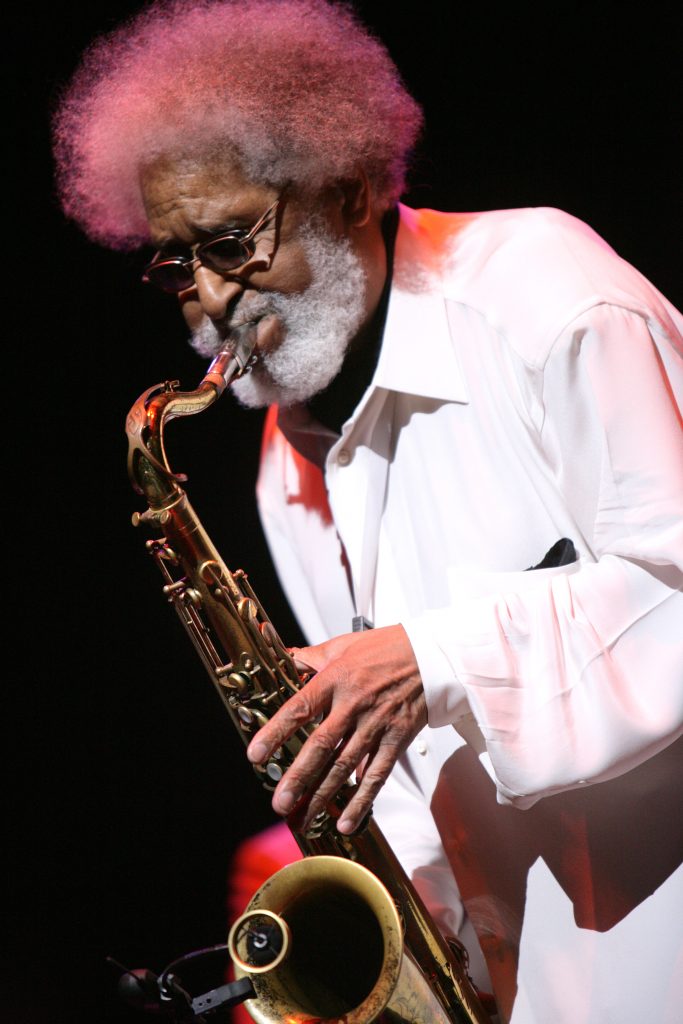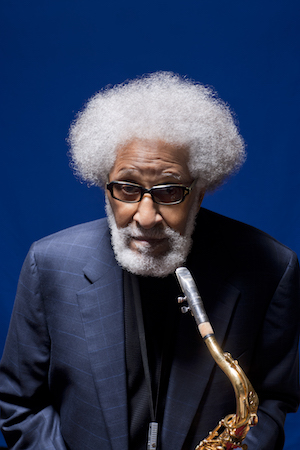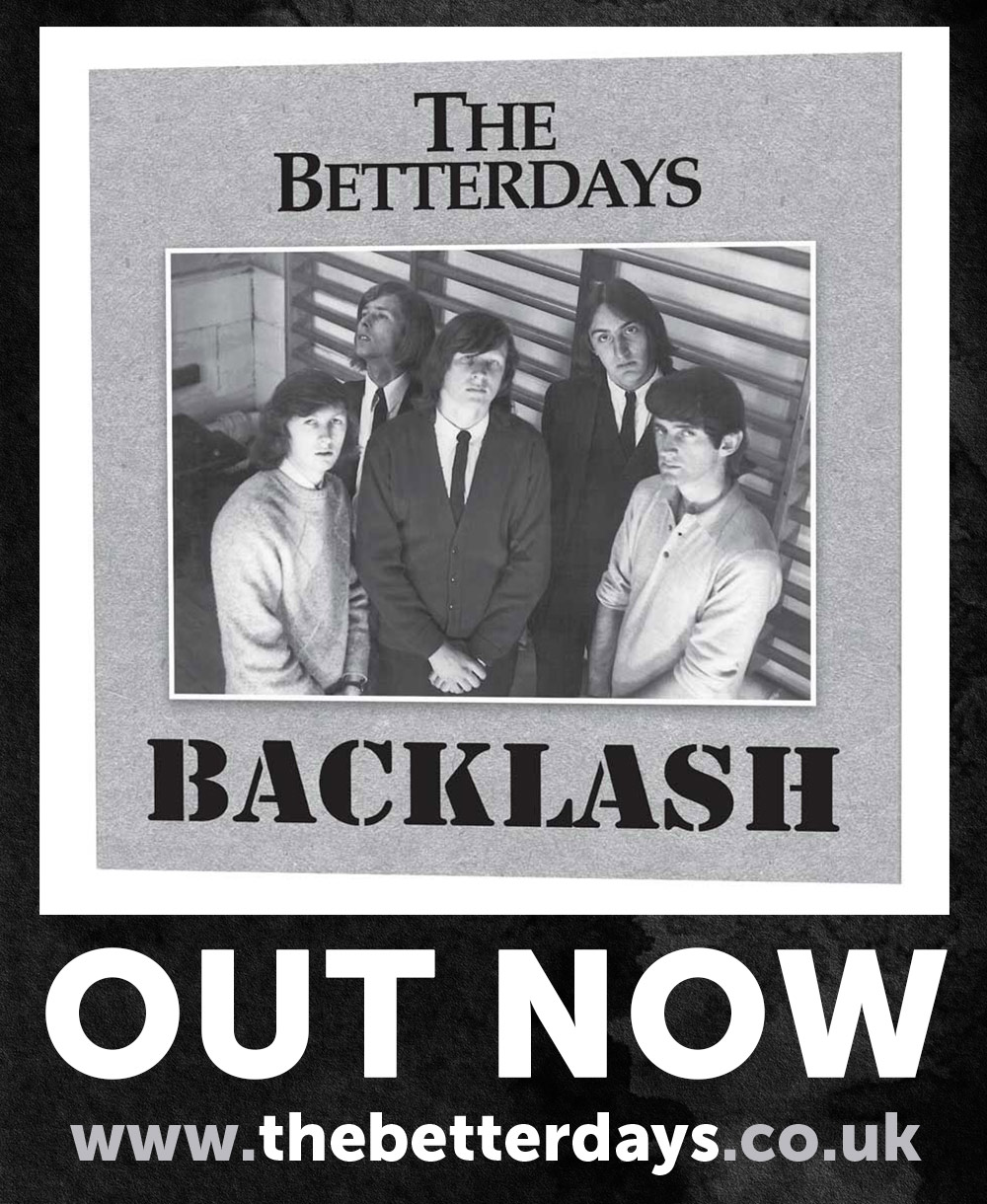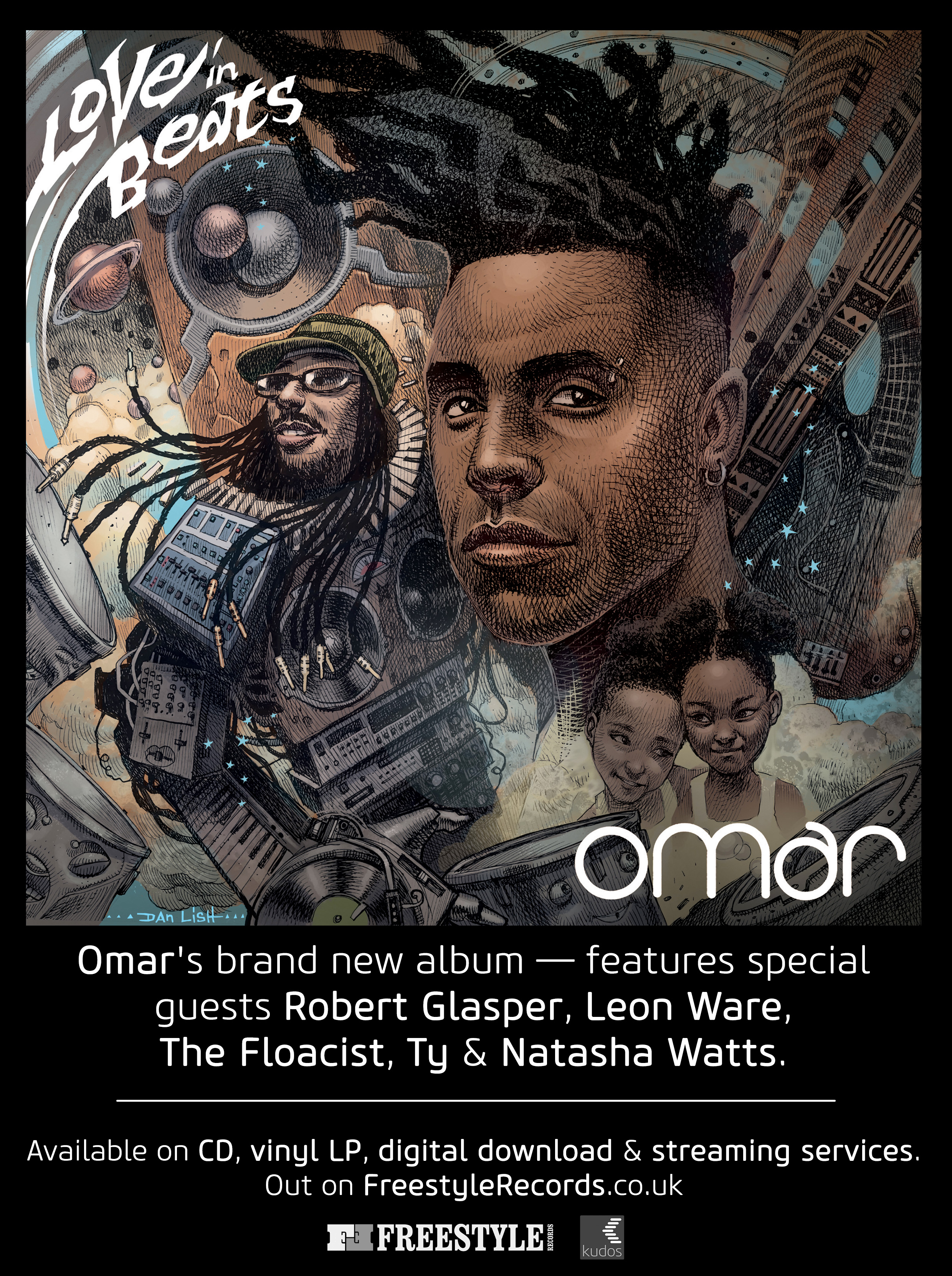The second part of a fascinating exclusive insight into the life and career of jazz giant Sonny Rollins, speaking to Music Republic Magazine editor Simon Redley…
When jazz giant Sonny Rollins was evacuated from his New York apartment a stone’s throw from the World Trade Centre’s Twin Towers, after terrorists flew ‘planes into the iconic 110-storey buildings one horrific day 16 years ago, he grabbed one thing that HAD to go with him.
His prized horn, Henrietta. Today, at 86-years-old, this last man standing of the jazz legends sends shivers up my spine when he recounts the horrific sight and sounds he witnessed on that fateful morning of Tuesday September 11th, 2001 in New York.
The attacks killed 2,996 people, injured over 6,000 others, and caused at least $10 billion in property and infrastructure damage and $3 trillion in total costs. Sonny was caught up in that mayhem and horror. Over to him to tell his dramatic story…
“I was there that morning, in my apartment 39 floors high, in the New York City apartment we had. It was a beautiful morning; blue skies, a nice day.
“I was waiting for my driver to take me out that morning. My wife was coming down to the city the next day. I suddenly heard a big ‘Powww.’ I wondered what the heck that was. I think I had a sport’s station on the radio, and they told me what had happened.
“Everybody went downstairs and we saw the first building on fire, where the plane had gone into it. While we were down there looking; women were screaming and then the plane went into the other building.
“IT WAS A MADHOUSE”
“It was a madhouse. Everybody was running, women were screaming. All of this pollution coming out of the debris; it was like snow falling out of the sky.
“I couldn’t leave then because the Army had it cordoned off. I had to go back upstairs in my house. Everybody had to stay in their apartments.
“The next day is when the National Guard came by and evacuated everybody. In the meantime we had to stay there. A lot of toxic fumes in the air. I was right there, it was quite an experience.”
Speaking to me on the ‘phone from his Woodstock home outside of New York, Sonny tells me a health condition forced him into early retirement in 2012, when he gave his final performance.
He so misses playing his beloved sax every day as he used to. But he leaves us one hell of a musical legacy. Having appeared on at least 80 albums, his talents and achievements have not gone unnoticed.
Theodore Walter Rollins, nicknamed ‘Sonny’ as the youngest of three, was born on September 7th, 1930 in New York City. He grew up in Harlem not far from the Savoy Ballroom, the Apollo Theatre, and the doorstep of his idol, Coleman Hawkins.
After early discovery of Fats Waller and Louis Armstrong, he started out on alto saxophone, inspired by Louis Jordan. At the age of sixteen, he switched to tenor, trying to emulate Hawkins. He also fell under the spell of Bebop.
He began to follow Charlie Parker, and soon came under the wing of Thelonious Monk, who became his musical mentor and guru. Sonny worked and recorded with Babs Gonzales, J.J. Johnson, Bud Powell and Miles Davis before he turned twenty.
In the early fifties, he established a reputation first among musicians, then the public, as the most brash and creative young tenor on the scene, through his work with Miles, Monk, and the MJQ. He recorded with Miles Davis, the Modern Jazz Quartet, Charlie Parker and Thelonious Monk between ‘51 and ‘53. Joining the Miles Davis Quartet in 1955.
In 1956, Sonny began recording the first of a series of landmark recordings issued under his own name. Between 1959 and late `61 though, he withdrew from public performance.
In 1958, he appeared in Art Kane’s famous photograph, “A Great Day in Harlem,” 57 notable jazz musicians on the steps of a tenement building in New York. Sonny is one of only two surviving musicians from the photo at the time of writing. The other being Benny Golson, who is 88 this month (January 2017.)

Photo: John Abbott.
Sonny took yet another sabbatical in `66. He made his next record in `72. He won his first performance Grammy for This Is What I Do (2000), and his second for 2004’s Without a Song (The 9/11 Concert), in the Best Jazz Instrumental Solo category (for “Why Was I Born”). In addition, Sonny received a Lifetime Achievement Award from the National Academy of Recording Arts and Sciences in 2004.
In June 2006 Rollins was inducted into the Academy of Achievement – and gave a solo performance – at the International Achievement Summit in Los Angeles. The event was hosted by George Lucas and Steven Spielberg and attended by world leaders as well as distinguished figures in the arts and sciences. Since 2006, Rollins has been releasing his music on his own label, Doxy Records.
Rollins was awarded the Austrian Cross of Honour for Science and Art, First Class, in November 2009. The award is one of Austria’s highest honours, given to leading international figures for distinguished achievements. The only other American artists who have received this recognition are Frank Sinatra and Jessye Norman.
In August 2010, Rollins was named the Edward MacDowell Medalist, the first jazz composer to be so honoured. The Medal has been awarded annually since 1960 to an individual who has made an outstanding contribution to his or her field.
PRESIDENT BARACK OBAMA HONOURS SONNY…
Yet another major award was bestowed on Rollins on March 2, 2011, when he received the Medal of Arts from President Barack Obama in a White House ceremony. Rollins accepted the award, the nation’s highest honour for artistic excellence, “on behalf of the gods of our music.”
On December 3, 2011 Sonny Rollins was one of five 2011 Kennedy Center honourees, alongside actress Meryl Streep, singer Barbara Cook, singer/songwriter Neil Diamond and cellist Yo-Yo Ma. Rollins said of the honour, “I am deeply appreciative of this great honour. In honouring me, the Kennedy Center honours jazz, America’s classical music. For that, I am very grateful.”
During our chat, we talk about his life’s quest to find inner peace and a deeper spiritual understanding of why we are here, and what we are supposed to be doing with our lives.
“It is never too late to be a better person. It is always up to us; every day we wake up we have another opportunity to be a better person. To be a kinder person, not to hurt anybody, not to insult anybody…everyday you wake up, you have a chance to get closer to that goal.
“In the Bible; it says you reap what you sow. One thing I have learned since I’ve been really into this; there is only one truth. We hear it in different ways, coming from different countries, different civilisations. But there’s one truth. ‘Do unto others as you would have them do unto you.’ I try to be a kind person to somebody else who needs it. Don’t take advantage of people… That truth goes through all of humanity, every person on this planet. That’s the truth.
“I’m into Yoga, Buddhism, all kinds of things that have spiritual knowledge. But I’m not where I want to be as a realised, good human being. That’s my goal and if I don’t get it in this life, I’ll get in another life. But I’m on the right track now.”
So what is the key to a seven decade career – and at the top for most of it? “I don’t think it matters in time, how long you live. Look at Clifford Brown, he didn’t live a long time in years. (Legendary jazz trumpeter, who died in a car accident in 1956 aged just 25.)
“I believe in many lives, I don’t believe in just one life. So this is one little life. There may be trillions of lives we have to live until we learn the Universal truth.
“One life doesn’t matter to me, it doesn’t matter. I’m 86 or I’m eight, it doesn’t matter. It’s what I get out of it. I’ll go on to the next life whatever that is, and I don’t know what it is and I don’t care to know what it is. It doesn’t matter.
“I have to live this life, which I am very grateful that I’m living this life and I’m learning. I’m 86, but it took me this long to learn about Yoga, to learn about Buddhism, to learn about the great teachers of spirituality from all over the planet. If I’d been a different person I might have learned this by when I was 30, but it has taken me until I am 86.”
Does he have any regrets in his life? “My yoga studies have shown me that the life I am living is the life I am supposed to be living. So there are no regrets. I can say, ‘Gee, I shouldn’t have done this, or done that, but who knows? I don’t know if I shouldn’t have, who knows? By doing that, I am now able to do what I am doing now.
“Now I am able to be a person who is…I see the light. I’m living for the light. So who knows; if I did something different I wouldn’t be where I am today. I don’t live like that, I don’t have regrets. I think that’s sort of a very childish way to look at life.”
We talk about life being about the journey, not the destination. “The journey. Exactly. Life is very complicated. There is a right way and a wrong way. We have to make a choice. It’ll come out alright in the end. Not in this life; I’m not interested in this life. Everything’s got to be; ‘there is this life and then you die’… That is not reality.
“It doesn’t really matter if you choose right or you don’t choose right. Eventually you are going to choose right, because we have a good Universe. The Universal spirit is good and we will get there. As the saying goes, you pay me now or you pay me later.”
In 1958 Sonny recorded the classic album “Freedom Suite.” In his liner notes, he made reference to “the persecution of the Negro.” Those notes could have been written today, almost 60 years later, when we see the terrible TV footage of US police shooting black men, and some of the racial hatred displayed at Trump rallies during the US Presidential election campaign.
“I agree. I agree. Things haven’t really changed. Look, it’s not just that; things haven’t changed in the world. We had WW 1, WW2, Vietnam War, Spanish American War, the Boer War. We have this war, that war…things have not changed.
“Technology makes it easier to kill people…”
“Humanity has not changed. I don’t care what era we are living in, the time we are living in; humanity has not changed. So right; what I wrote on the ‘Freedom Suite’ could be applied today. And what the Bible was talking about; Cain, and Abel killing his brother; that hasn’t changed either.
“It is up to us individually to take a path that we see is a path towards a better understanding of what we are here for, whatever that is. Try to find out what it is. Things have not changed. Things are still the same. The difference today is we have technology which makes it easier to kill people. That’s about it.”
I speak about the sad news of the death of Sonny’s bassist Bob Cranshaw last November, who played with him for around 50 years. “We can’t be selfish. We’ve had our colleagues and our wives and our family, we’ve had them and now they have to move on. To somewhere else. It is not for us to be sad. You can’t be sad because say, Lester Young is not here. No. Lester Young left something here for us. That is the way you have to look at it.”
Sonny reveals he has made provision for the many horns he owns, for when he is no longer with us. “Oh yeah, I’ve got a lot of horns. I’ve given some horns away to some people. Unfortunately I’ve got all these horns and I can’t play them.
“It’s all made out and they’ll all be taken care of. Let’s say that they’re being taken care of by people who will know what to do with them. The way I expect. If something is to be put in a museum, it will be handled in that way.”
The main horn he played for many years was christened ‘Henrietta’, by his wife Lucille, who he was happily married to for more than 40 years and who became his manager. She died in 2004.
A question that when someone once asked jazz legend Louis Armstrong, prompted the reply: “If you have to ask, you’ll never know.” What is jazz? Sonny gives his interpretation.
“I think jazz is something like a level of music which is sort of in the air. Something you can’t really define. But when you hear it, you can hear it. If you hear some great musicians play; like Louis Armstrong, it has a great effect on you and you don’t know what it actually is.
“Now you can write music of course, and a lot of people all over the world play it. But what it is itself is something of a very spiritual nature. When you listen to music, it takes you to that spiritual place out of this world. It doesn’t have anything to do with this world. It takes you away from this world.”

Photo: John Abbott.
So how does he view jazz music today? Is it strong, healthy or a genre that is fading away like the originators of that great, great music?
“Today we have so many different ways of enjoying music. We’ve got so much music today. Technology has given us so much music, of all different kinds. Technology has made maybe too much information accessible.
“But on the other hand, I still like the works of Johan Sebastian Bach, Ludwig Van Beethoven. I still like Thelonious Monk, I still like Miles, Charlie Parker the great. So you see; in a sense you can’t look at music as it exists in any time period.
“Maybe in five years, everybody will want to listen to traditional jazz again or be bop jazz or free jazz, whatever. It’s a question that has no correct answer to it.”
So do today’s younger jazz players pay enough homage to the greats and do their homework about the foundations of this great music and the forefathers who created it? “Sure, sure. Oh yeah. You’ve got to.” Today, Sonny doesn’t listen to any music, unless he is sent something by a new artist who a friend suggests he listen to.
When a British reggae star ‘met’ his sax hero Sonny Rollins in the rain…
Talking of new guys; back in 1980 or ’81, when a young ‘Brummie’ sax player and British reggae band member went to the USA for the first time, he visited a famous music store in New York on a very wet day. Outside the store in the street, the rain pouring down, there was a man playing a saxophone oblivious to the weather.
The passers-by did just that; passed on by without taking a second glance at the sax man in the rain. But this young chap from Birmingham in the UK knew exactly who it was. His heart skipped a beat when he clocked the famous face was none other than his hero Sonny Rollins.
When UB40 sax man, composer and songwriter Brian Travers told me that story, and the fact that Sonny was the reason he learned to play the sax in his teens, I asked him what he said to his idol back then.
His answer was surprising. “Nothing. I didn’t speak to him. I was too scared!” I told Brian of my imminent interview with Sonny and he got very excited, and asked to listen to the tape of the conversation, a date we are about to keep.
I can go one better than that; I told Sonny of this story and how he influenced a man who has helped to sell circa 120 million records as a founder member of Britain’s most successful and best loved reggae band, UB40.
And how that fleeting glimpse of Sonny in the rain outside Manny’s music store in New York almost 40 years ago, inspired gifted artist Brian Travers to paint three pictures of Sonny from his memory of that day.
Sonny sends this personal message to Brian: “Isn’t that nice. Well Brian Travers, I would like to tell him he has already gotten the spirit.
“Once you’ve gotten the spirit of music, you’re OK for the rest of your life. This life. You’re OK. And anything that goes on in this world; and there are awful things that happen in the world as you know…If you are in the music field, and you are involved in music; everything comes out OK.
“I congratulate him on his success in music and I send him my very best wishes, and I’m glad I had a positive influence on him. Tell him to have a good life.” I am about to do so, Mr Rollins.
Sonny has recorded for many record labels, including Prestige Records, Blue Note, Riverside, Contemporary, RCA Victor, Impulse!, Milestone, Okeh and his own label Doxy Records. Where was he most at home?
“It must have been between Blue Note and Prestige. Because those are the only record companies that really recorded a lot of jazz in those days. So on those labels I played with a lot of the people I was talking about.
“With Miles and Max Roach on Prestige. On Blue Note I played with Bud Powell and Fats Navarro. On Prestige with Coltrane, Philly Joe Jones and other great people. I was playing more with the greats on those two labels.”
So to close our wonderful 90 minute chat, and tick jazz colossus Mr Sonny Rollins off my bucket list of a four-decade journalism career, I ask Sonny to sum himself up in just a few words.
“Well, let’s see. A spiritual quest; a life of spiritual quest… I hope I have more enlightenment. I want to be able to play again and be able to create more music. Hopefully. But we don’t know that; we’ll have to wait and see.” We so hope so too Sonny. Truly.
By Simon Redley
Credit: Painting of Sonny Rollins by Brian Travers
- Please read Part 1 of the exclusive interview with jazz icon Sonny Rollins, here at Music Republic Magazine in our Features Zone. In it, Sonny says: “I was ashamed to play with the Rolling Stones…” Find out why.





